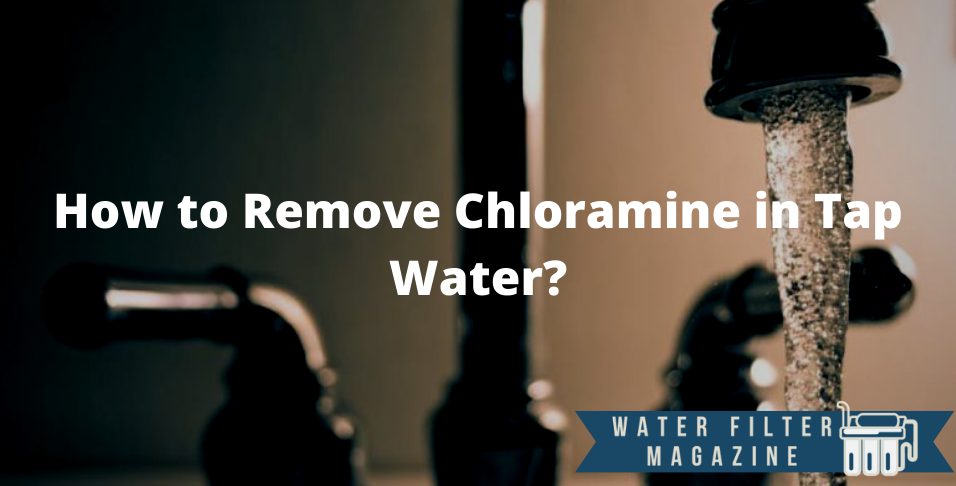 Chloramines have been widely used for disinfection and keeping public water systems safe. Despite their indisputable benefits, though, they do have some adverse side effects. The first thing that one would notice is the chemical taste of the water. In addition to this, they can lead to eye and skin irritation.
Chloramines have been widely used for disinfection and keeping public water systems safe. Despite their indisputable benefits, though, they do have some adverse side effects. The first thing that one would notice is the chemical taste of the water. In addition to this, they can lead to eye and skin irritation.
So there is no wonder that people have been fighting hard to remove chloramines from their drinking water. However, this turns out to be a very challenging task. For example, you won’t succeed in removing them if you use only carbon filters. There are several methods that have proved effective in removing chloramines. Two of them are using a reverse osmosis filtration system and using a catalytic carbon filter.
Why Should We Remove Chloramines from Water?
- Odd odor and taste – as we have already mentioned, chloramines are responsible for the metallic taste that we sometimes may notice in our drinking water. Not to mention the strong smell that cannot be avoided when we have these elements present in our water supply system. If you have ever been to a public swimming pool, you will surely be well familiar with this odor.
So if you want to get rid of the weird taste and smell of your water, you cannot only rely on the standard water filtration systems. They are simply not effective enough. Remember that chloramines are very stable compounds that require a lot of effort and complicated methods to be removed.
- Irritation of your eyes and skin – if you have ever bathed in water with a high level of chloramine, then maybe you still remember the skin rash that you had afterward. So imagine how bad this rash can be for people who are inclined to skin problems. Any skin issues such as acne or eczema can get much worse thanks to chloramines. The reason for this is that chloramines make your skin dry and cause the appearance of flakes and scales. Relying on a shower filter is not enough if you want to protect your skin from chloramines.
Another rather unpleasant effect of chloramines in water is eye irritation. You have probably observed that some people have their eyes red after going out of the shower. What is more, these contaminants can affect your mucous membrane, sinuses, and nasal passages. This happens because of the chloramine vapor that you inhale while having a shower or bathing.
- It has been recently proved that chloramines can cause corrosion to the metal pipes of your water supply system. If you are interested in understanding why this happens, it is because when chloramines enter the water supply system, they transform the chemical properties of the water. When we combine this with alkalinity and low pH levels, we get corrosion.
Is It Safe to Drink Chloramines?
EPA claims that it is safe to drink water with chloramines not exceeding 4 mg/L. So there is no need to worry that we may encounter water with more than 4 mg/L chloramines as the municipalities in all American cities follow strict guidelines when it comes to their water supply systems. However, chloramines do pose a risk for hemodialysis patients. So they should avoid using any water with chloramines.
How to Remove Chloramines from Water Effectively?
One of the best ways to remove chloramines from water is by using catalytic carbon filtration systems. We would like to underline once again that the standard carbon filters, which are used to remove chlorine, are not effective when it comes to chloramine. Since chloramines are a very powerful disinfectant, they need to be very stable compounds. This is another reason which explains why they are so difficult to remove.
An activated carbon needs a lot of contact time in order to be effective, which will lead to a reduction of the water flow. So there is hardly any household that will like to wait for such a long time for the activated carbon to eliminate chloramines from their water. Reverse osmosis systems that can be mounted under the sink are very effective at removing these stable chemical compounds. You can also try ultrafiltration, even though it is not that commonly used.
If you are interested in understanding how reverse osmosis systems work, you should know that the reverse osmosis membrane doesn’t remove the chloramines by itself. However, reverse osmosis systems have pre-filters that are responsible for the elimination of a number of contaminants. Reverse osmosis functions very slowly, which allows time for the pre-filters to get in contact with the water and disrupt the stability of the chloramine compounds.
Indeed, the most successful way to eliminate chloramines is by whole house water filters. These are a good option, especially if you are concerned not only about your drinking water. Whole house water filters will remove chloramines and other unhealthy contaminants from all your water fixtures. So you can say ‘goodbye’ to skin and eye irritation.
Visit our website for more product reviews like top-rated laundry detergents for hard water!

